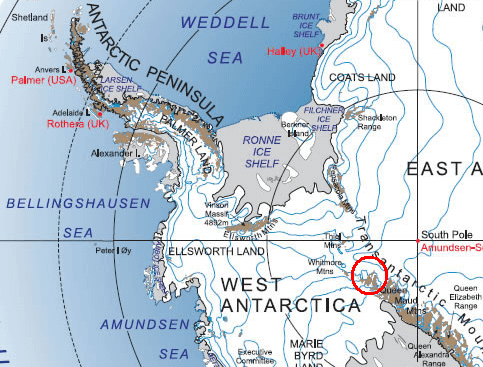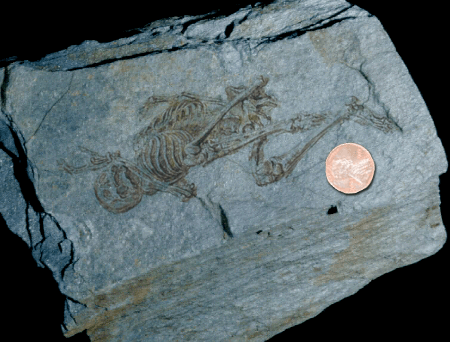In the icy expanses of Antarctica’s Whitmore Mountain range, a sensational claim has emerged: the discovery of 600-million-year-old fossilized skeletons of tiny humanoids. This story, which has sparked intrigue across social media and fringe websites, suggests an ancient race of diminutive humans predating even the earliest vertebrates. But is there truth to this astonishing tale, or is it a modern myth born from speculation? Let’s dive into the evidence and separate fact from fiction.
The Origin of the Claim
The story first gained traction around 2009, with reports from outlets like The National Reporter claiming that paleontologists stumbled upon two fossilized skeletons, less than a foot tall, while searching for dinosaur evidence in Antarctica. These remains, allegedly found in sedimentary rock and dated to 600 million years ago, were described as human-like, with one skeleton in a fully extended position showing remarkable detail. Dr. Marly of Cambridge University, cited in these reports, supposedly confirmed the fossils’ age and humanoid characteristics, sparking theories about an unknown ancient species.

Similar claims have appeared on platforms like X, with posts in 2021 and 2023 amplifying the story, often accompanied by images of tiny skeletons with a penny for scale. Some narratives even suggest these findings challenge evolutionary timelines, proposing that advanced beings existed long before jellyfish, the dominant lifeforms of that era.
Scientific Scrutiny
However, the scientific community has debunked these claims as an internet hoax. Briana Pobiner, a paleoanthropologist at the Smithsonian Museum of Natural History, told Snopes that there is “no credible published scientific literature, or any other valid finding, that supports this claim.” The timeline is a major red flag: 600 million years ago, during the Ediacaran period, life on Earth was primarily composed of soft-bodied organisms like jellyfish, with vertebrates not appearing until around 500 million years ago. The earliest human ancestors, such as Homo sapiens, evolved roughly 2 to 6 million years ago, making the existence of humanoid fossils from 600 million years ago biologically implausible.
Additionally, the smallest known human species, Homo floresiensis (nicknamed the “Hobbit”), stood about 3 feet tall and lived 60,000 to 100,000 years ago on the Indonesian island of Flores. These fossils, far younger and larger than the alleged Antarctic finds, are the closest known relatives to tiny human-like beings. The images circulating with the Antarctic claim, showing tiny skeletons with suspiciously perfect preservation, exhibit signs of digital manipulation, further undermining their authenticity.
A Broader Context
The Antarctic claim echoes other dubious discoveries, such as a 13 cm skeleton found in Chile’s Atacama Desert in 2003, initially speculated to be a “tiny humanoid” but later identified as a human fetus with genetic anomalies. Such stories often fuel speculation about extraterrestrial or ancient advanced civilizations, reminiscent of the “ancient astronaut theory” discussed in your previous post about UFO rock paintings. However, unlike the cave art, which can be studied for cultural insights, the Antarctic fossils lack verifiable evidence.

Antarctica has yielded genuine fossil discoveries, such as 71-million-year-old dinosaur and marine creature remains found in 2016, but these align with established evolutionary timelines. The harsh Antarctic environment, once warmer and closer to equatorial regions, preserves fossils well, but no credible evidence supports humanoid life from 600 million years ago.
Why the Fascination?
The allure of tiny humanoid fossils taps into humanity’s curiosity about our origins and the possibility of unknown chapters in Earth’s history. Stories like this gain traction because they challenge conventional science, much like tales of ancient UFOs or lost civilizations. On platforms like X, users express intrigue, with some questioning why such a discovery didn’t make mainstream news, while others dismiss it as a hoax. The lack of peer-reviewed studies or institutional backing, however, suggests this is more fiction than fact.
A Call for Critical Thinking
As with the ancient rock paintings in Madhya Pradesh and Chhattisgarh, extraordinary claims require extraordinary evidence. The supposed 600-million-year-old humanoid fossils lack the rigorous documentation and scientific validation needed to be taken seriously. Instead, they serve as a cautionary tale about the spread of misinformation in the digital age. For those captivated by the mysteries of our planet, Antarctica’s real fossils—dinosaurs, ancient marine life, and early vertebrates—offer plenty of wonder without the need for fabricated tales.
This story reminds us to approach sensational claims with skepticism, seeking out credible sources and scientific consensus. The truth about our past is fascinating enough without embellishment. Stay curious, but stay critical.


